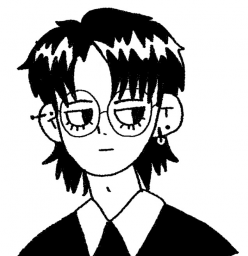Project Proposal – (retro)speculative futures
For this project, I wanted to take a different approach to thinking about speculative narratives in a way that is grounded in reality such that it can be conducive to actualizing our imagined futures in practice — (retro)speculative futures, a practice of looking into the past to project ourselves into the future.
To stay true to the spirit of “retrospeculation”, the foundations of this concept/ idea will be drawn from the course modules of Multiliteracies and Speculative Futures in addition to my own personal lived experiences, thoughts and feelings as an exercise in “transformed practice” (The New London Group, 1996) Therefore, this project will be self-referential in both the framework structure and in methodology.
Foundations:
In Speculative Everything, the authors pose “design speculations as a catalyst for collectively redefining our relationship to reality” with the idea of possible futures as tools to understand the present to discuss the future people want and do not want.
However, they also mentioned that “for us, futures are not a destination or something to be strived for, but a medium to aid imaginative thought- to speculate with”.
Though speculation about the future is indeed necessary and important, in some ways, it can become limiting. Without enacting agency and taking action in the futures we desire to create, it continues to stay immaterial and almost ethereal, an intangible hope on the horizon. There seems to be a large gap between “theory” and “praxis”, in which (retro)speculative fiction hopes to bridge in-between.
In the book, the authors take a diagram inspired by futurologist Stuart Candy to illustrate the potential different kinds of future they propose:

- Probable Futures: describes what is likely to happen unless there is some extreme upheaval of natural or societal disaster
- Plausible Futures: describes “what could happen” and exploration of alternative economic and political futures to ensure that organizations will be prepared for and thrive in number of different futures.
- Possible Futures: describes the linking between today’s world and the suggested one. The scenarios should be scientifically possible and have a path from where we are today to where we are in the scenario.
- Preferable Futures: describes the intersection between plausible and probable but poses the questions “what does preferable mean, for whom, and who decides?” Currently determined by government and industry, though limited by citizen-consumers.
With the above proposed structure, (retro)speculative futures will be operating on the level of Possible Futures, as it aligns with the authors beliefs that it will ” allow the viewers to relate the scenario to their own world and use it as an aid for critical reflection”.
Though not totally aligning or deviating from the author’s belief that designer’s roles “should not define futures for everyone else but work with experts, including ethicists, political scientists, economists, and so on, to generate futures that act as catalysts for public debate and discussion about the kinds of futures people really want.” (p. 6) , it should be noted that (retro)speculative futures is a retrospeculation of an individual’s own future, and is hyper-personal in that regard. It aims to plant the seed of imagination in the individual first and foremost, before extending it to speculative futures as a community, or even on a larger scale as a society.
This social hierarchical structure stemming from the individual-family-community-society is highly influenced by a central concept of social harmony within Confucianism, which is informed by my own cultural upbringing and education in Taiwan. (re: “highly-self referential”) Implications of cultural literacy will also be discussed in-depth and the influence it has when it comes to the structural decisions I have made.
Methodology
Borrowing from Pedagogy of Multilieracies, given this new “critical framework”, I hope to “retrospect” on my past to see how my previous experiences has influenced my passions, habits, literacies, decision-making processes, desires, etc. in the present as “situated practice”. With the help of “overt instruction” from the reading materials, I will use the concepts as metalanguage to describe and interpret the design elements. I will then “speculate” on what my current skills, talents, knowledge, lack of knowledge, etc. are, and how that aligns with the future I would like to create for myself as “transformed practice”.
In this case, I will limit my retrospeculation in the realm of language and education, which is relevant to my own personal life, professional career, and the scope of this final assignment, in regards to ” potential relationship with media, education, text and technology”. I hope to reflect upon the focus in three different facets:
- Personal: personal interests, decisions, defining moments related to topic
- Interpersonal relationships: important figures, family relations, friendships
- Environments: location, cities, community, educational environment, etc.
Further Development:
So far, I have yet decided on a medium in which to deliver the concept and idea. One potential would be hyper-text Twine zine, in which the medium would have enough flexibility for multi-media, and room for serendipitous exploration of different node-paths.
References:
Dunne, A., & Raby, F. (2013). Speculative everything: design, fiction, and social dreaming. Cambridge, Massachusetts: The MIT Press.
Kunjo. (2017, February 12). Speculative. Retrieved August 7, 2022, from https://speculative.hr/en/introduction-to-speculative-design-practice/
The New London Group. (1996). A pedagogy of multiliteracies: Designing social futures. (Links to an external site.) Harvard Educational Review 66(1), 60-92.
